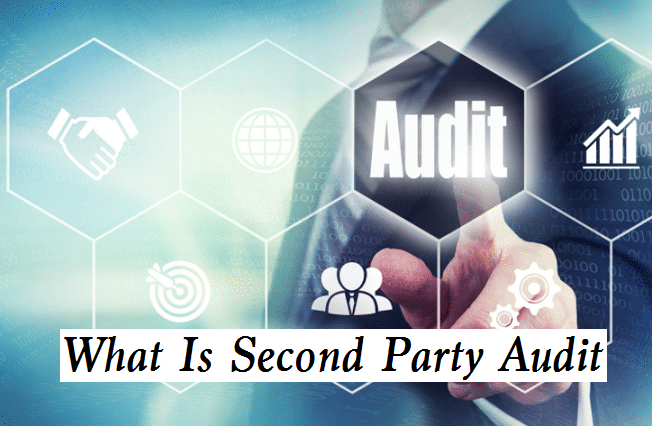A second-party audit is a type of external audit, how is a second-party audit defined and what are the advantages? Let’s see some examples of the second party.

What Is Second Party Audit
A second-party audit is an independent evaluation of a company’s quality management system, conducted by a party that has a vested interest in the company’s operations, such as a customer or a supplier. In a second-party audit, the auditor assesses the company’s ability to meet contractual obligations or regulatory requirements.
For example, if a company contracts with a supplier to provide a component for its product, the company may conduct a second-party audit of the supplier to ensure that the supplier’s quality management system meets the company’s standards and that the supplier is capable of delivering the required components on time and within budget.
Second-party audits can also be used to assess the quality and safety of products or services, evaluate environmental or social responsibility, and ensure compliance with industry standards and regulations. The main objective of a second-party audit is to provide assurance that the company or supplier being audited is meeting the required standards and contractual obligations.
Advantages of Second-Party Audit
- Improved quality: Second-party audits can help to improve the quality of products and services by identifying areas for improvement and ensuring that the supplier or vendor is meeting the required quality standards.
- Enhanced supplier performance: By conducting second-party audits, companies can assess the performance of their suppliers or vendors and provide feedback to help improve their performance.
- Risk mitigation: Second-party audits can help to mitigate the risk of non-compliance with regulatory requirements or contractual obligations by identifying areas of non-conformance and providing recommendations for improvement.
- Increased accountability: Second-party audits can increase accountability by holding suppliers or vendors responsible for meeting the required standards and ensuring that they are providing products or services that meet the needs of the company.
- Competitive advantage: By conducting second-party audits and ensuring that their suppliers or vendors are meeting the required standards, companies can gain a competitive advantage by delivering high-quality products and services to their customers.
What Is An Example of A Second Party?
A second party in the context of a second-party audit is a party that has a vested interest in the operations of the company being audited. Examples of second parties can include:
- Customers: Customers may conduct second-party audits to ensure that a supplier or vendor is capable of meeting their requirements for quality, delivery, and cost.
- Regulators: Regulators may conduct second-party audits to ensure that a company is complying with applicable laws and regulations.
- Partners: Partners or joint venture partners may conduct second-party audits to ensure that their partner is meeting their contractual obligations and contributing to the success of the partnership.
- Investors: Investors may conduct second-party audits to assess the financial performance and risk management practices of a company in which they have invested.
- Suppliers: A company may conduct a second-party audit of its suppliers to ensure that they are meeting the required quality standards and delivering products or services that meet the needs of the company.